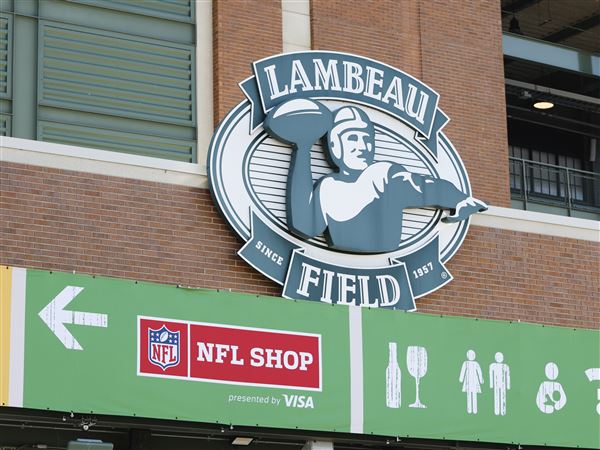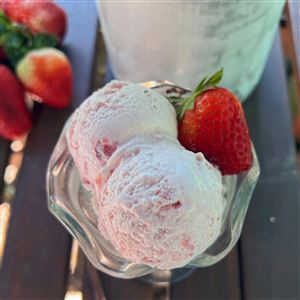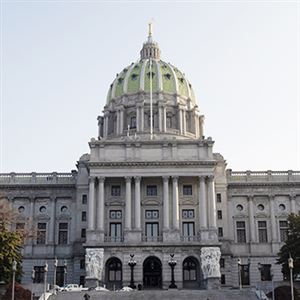MOUNT VERNON, Va. — George Washington has long been heralded as a founding father and the first U.S. president. But the Virginia native also was a gifted businessman and farmer. Much of it is still in evidence in the memorable landscape and gardens he planted at Mount Vernon, the plantation estate overlooking the Potomac River he inherited at age 29.
After taking ownership of the house and its 3,000 acres in 1761, Washington expanded and improved the mansion built of wood and “rusticated” to look like sandstone. He also used his lifelong love of horticulture to create “pleasure grounds,” or ornamental gardens, with a wide array of flowers, fruit trees and shrubs for the enjoyment of his family and guests.
Based on values both aesthetic and scientific, he also enlarged the lower kitchen garden, created a 4-acre fruit garden and nursery and added a small botanical garden to experiment with seeds, bulbs and cuttings sent from all over the world. He also constructed a heated brick greenhouse in the upper garden to overwinter the citrus trees and other tropical and semi-tropical plants imported from North Africa and the East Indies.
Despite his military career, “he really considered himself to be a farmer, and wanted to produce,” says Melanie Welles Creamer, Mount Vernon’s senior manager of horticulture.
Such was his acumen that he became one of the nation’s first large-scale wheat farmers after turning away from tobacco in the 1760s. He also was adept at turning the grain into flour: His state-of-art gristmill could grind 5,000 pounds of high-quality flour a day for use on the estate and to sell, with some shipments traveling all the way to Europe and the West Indies. His whiskey distillery also contributed to a well-run and profitable estate.
Today, Mount Vernon visitors can take a stroll through all four gardens, and what you’ll see depends on the season. In summer, that could be everything from brilliant red hibiscus, pink oleander and black-eyed Susan in the upper garden to peas, cabbage and globe artichokes in the lower garden.
You’re also able to check out the eye-catching fig trees that are propagated for sale at the estate’s plant and flower sales, which began as early as the Civil War as a source of revenue. Last year, garden volunteers sold 430 “General’s Choice” plants to the public.
“They’re low maintenance and high reward,” says Creamer, who oversees the estate’s four greenhouses and three hoop houses.
The fact the ancient fruit was one of Washington’s favorites adds to its appeal.
“There’s a historical connection,” she notes. “You’re taking home a piece of Mount Vernon, which is a big deal to people.”
Beauty, practicality
The estate had fallen into disrepair by the time the Mount Vernon Ladies’ Association raised the money to purchase the mansion and 200 acres in the 1860s, with plans to restore it to its original glory. That included replanting and restoring the gardens to accurately represent what the Washingtons would have grown.
In the 18th century, enslaved labor and indentured servants would have tended to the garden. Today, Creamer and four other full-time staff members do all the planting, weeding, watering and harvesting. Volunteers also lend a hand.
With its showy display of color and giant boxwood parterres, the upper garden — excavated and restored in 2009-2011— is a highlight of any tour of Mount Vernon. Originally a fruit and nut garden, it was converted in 1785 into a dual-purpose pleasure garden with vegetable beds bordered by fragrant and colorful annuals, perennials, roses and shrubs and rows of boxwood.
This is where you’ll along find a reproduction of Washington’s state-of-the-art greenhouse, built in 1951 on the original foundation based on drawings of the original structure that burned in 1835. A unique structure for the times, it features a deep fireplace with heated flues under the slate floors, keeping temperatures above freezing.
The lower kitchen garden — Martha’s domain, since she oversaw food preparation — is perhaps even more impressive when you consider it fed not just Washington’s family but also 600 visitors each year with an impressive variety of produce.
“It was really important to Martha to present special meals to guests with fresh fruits and vegetables,” says Creamer. It also spoke volumes about the family’s wealth and generosity.
Surrounded by 4-foot brick walls for protection and warmth, it boasts terraces for level gardening, brick and grass strips for walking, and pear and apple trees pruned to grow against the brick — a space-saving French technique called espalier — to provide shelter from wind for the vegetables grown inside.
And what a variety! Continuously cultivated since the 1760s, with a brick cistern in the center for a constant supply of warm water, the lower garden holds what was commonly available at the time and mentioned in Washington’s writings or visitors’ accounts — everything from strawberries, peppers, radishes, corn, pole beans and beets in summer to muscadine grapes, parsnips, brussels sprouts and beets in fall.
Mount Vernon also has hundreds of fruit trees — apple, pear, plum, cherry, peach and apricot — along with scores of the estate’s signature brown turkey fig trees stretched across a south-facing wall.
“There’s always something growing,” says Creamer.
Some plants are propagated from seeds and cuttings collected on the estate. Others are grown from seeds from heirloom seed companies such as Bartram’s Garden, the oldest surviving botanic garden in North America (Washington’s ledgers show he ordered nearly 200 tree and shrubs from Bartram’s Philadelphia nursery in 1792), Baker Creek and Seed Savers Exchange.
“We’re always updating our list as we find new information,” she says. “The whole intent is to interpret what he had.”
With its simple geometric planting beds and straight pathways through the garden, the garden’s reconstruction in 1938 exemplified the Colonial Revival movement. In fact, as one of the few surviving, maintained examples of such, “it’s historical in its own right to the history of the Mount Vernon Ladies Association, ” she says. So it will stay as it is.
Washington had intended to turn part of the fruit garden and nursery into a vineyard, but the Madeira grape cuttings he planted in the 1770s along with other native American grape varieties never took off.
That was definitely not a problem with the estate’s fruits and vegetables, some of which make their way onto the menu for special events or are donated to local food banks.
Last year, garden staff and volunteers harvested more than 7,000 pounds of produce from the gardens, with sweet potatoes and cabbage the largest crops. In May, they sold more than 4,400 plants at their spring plant sale in spite of severe rainstorms, and still had enough leftovers to fill 18 large planters at a wine fest and revamp the planters at the gift shop.
Visitors can also shop for heirloom plants plus native perennials, trees and shrubs grown in Mount Vernon's greenhouses at the fall plant sale on Oct. 3. It runs from 8 a.m.- 3 p.m. in the estate’s overflow parking lot.
Mount Vernon is open from 9 a.m.-5 p.m. every day of the year. Tickets include a tour of the mansion (entry is timed) and self-guided tours of the gardens and grounds. Adults cost $28, youth ages 6-11 are $15. More info: mountvernon.org.
Gretchen McKay: gmckay@post-gazette.com, 412-263-1419 or on Twitter @gtmckay.
First Published: June 9, 2023, 9:30 a.m.
Updated: June 9, 2023, 2:03 p.m.





















